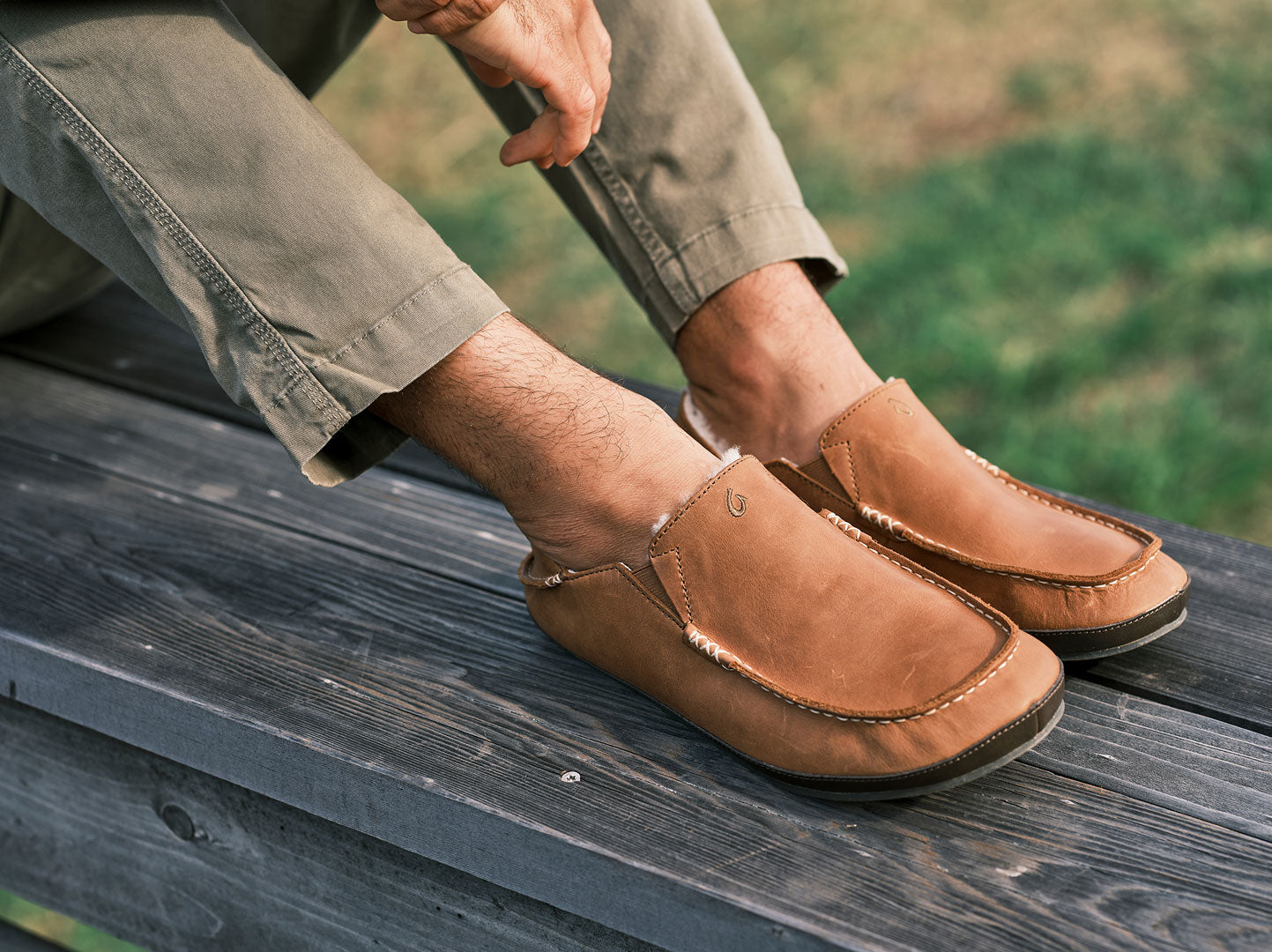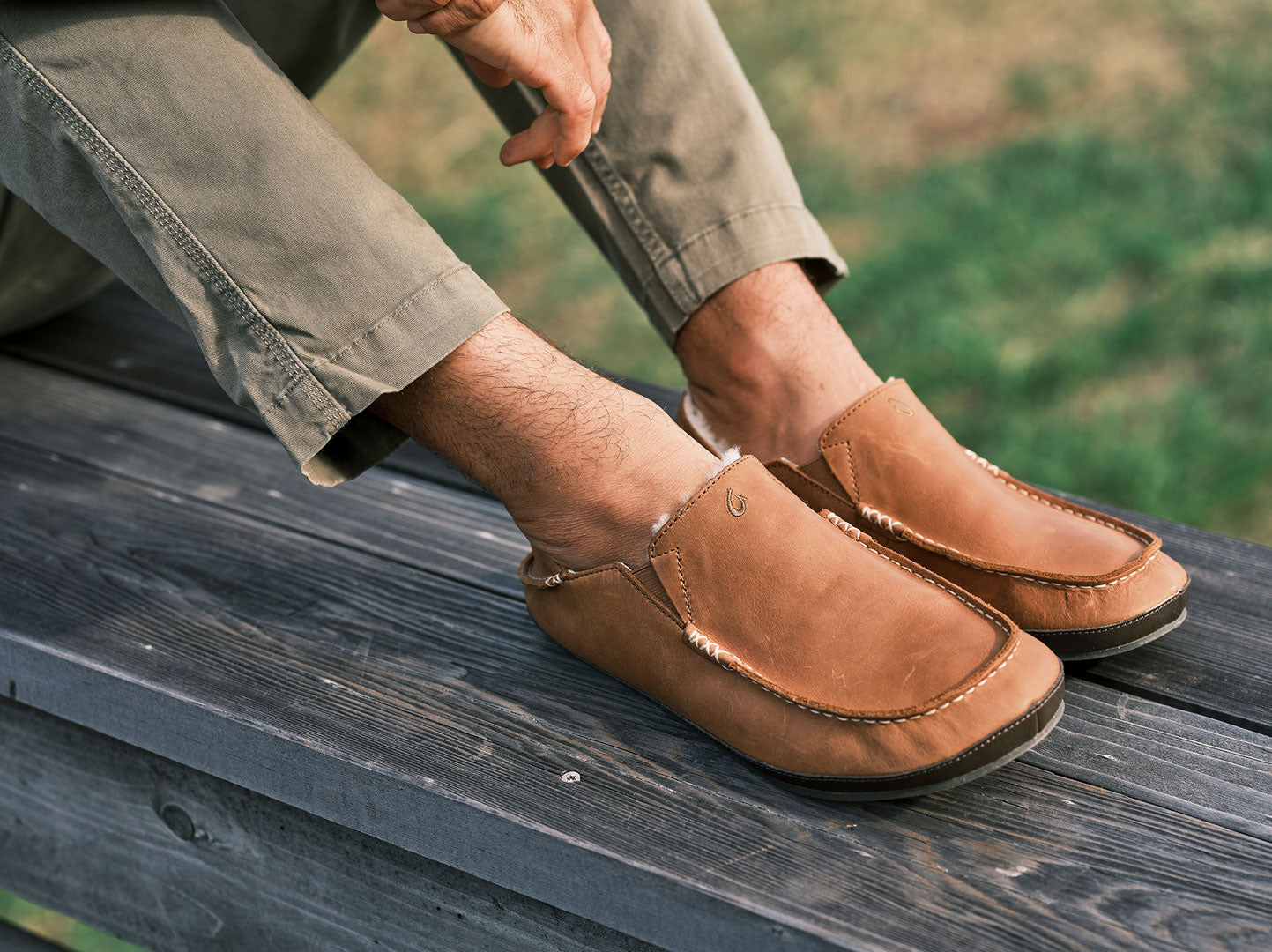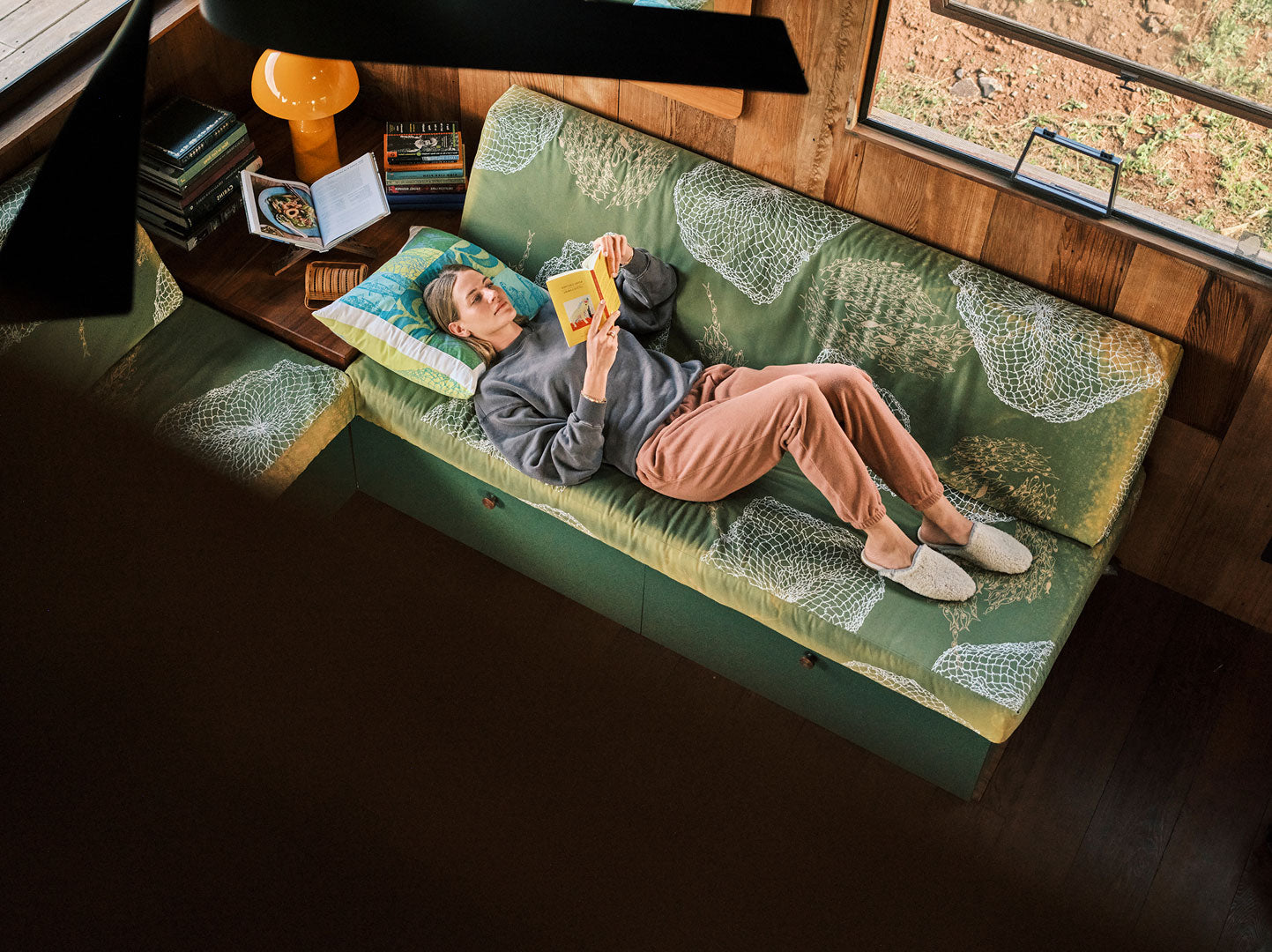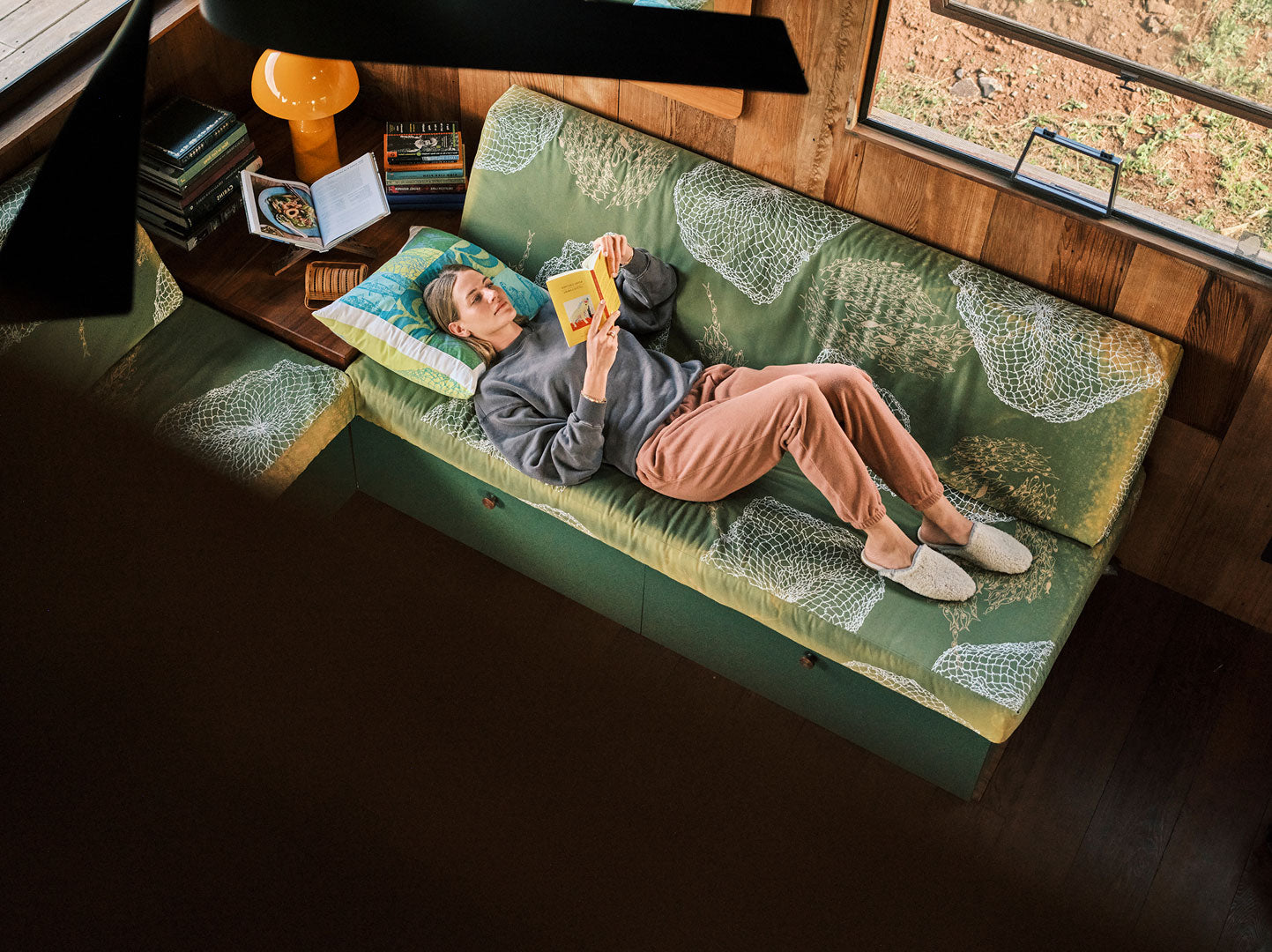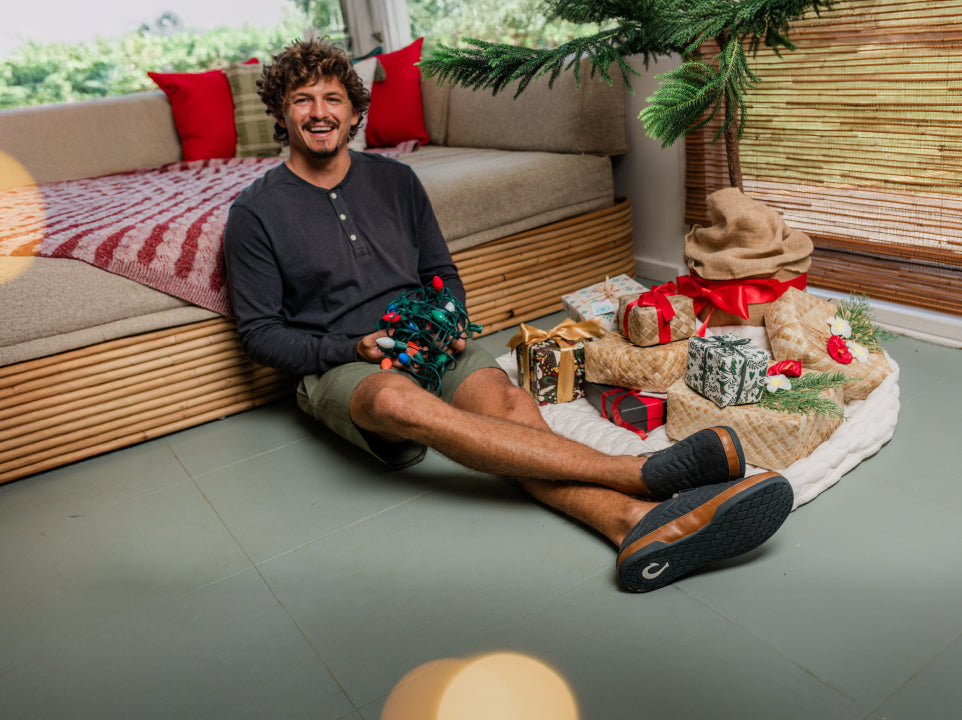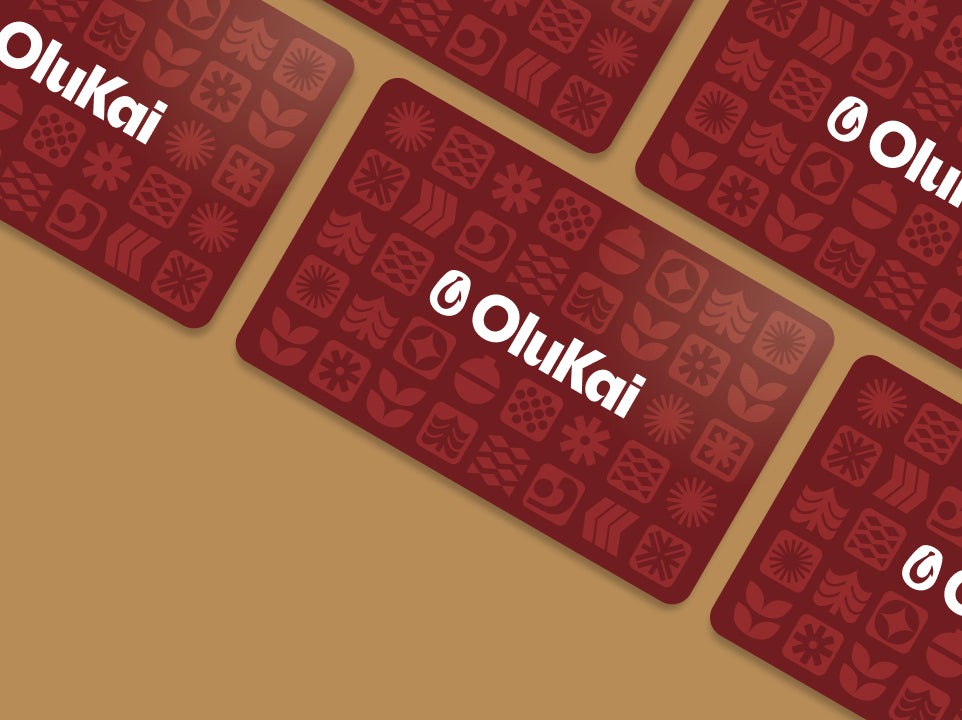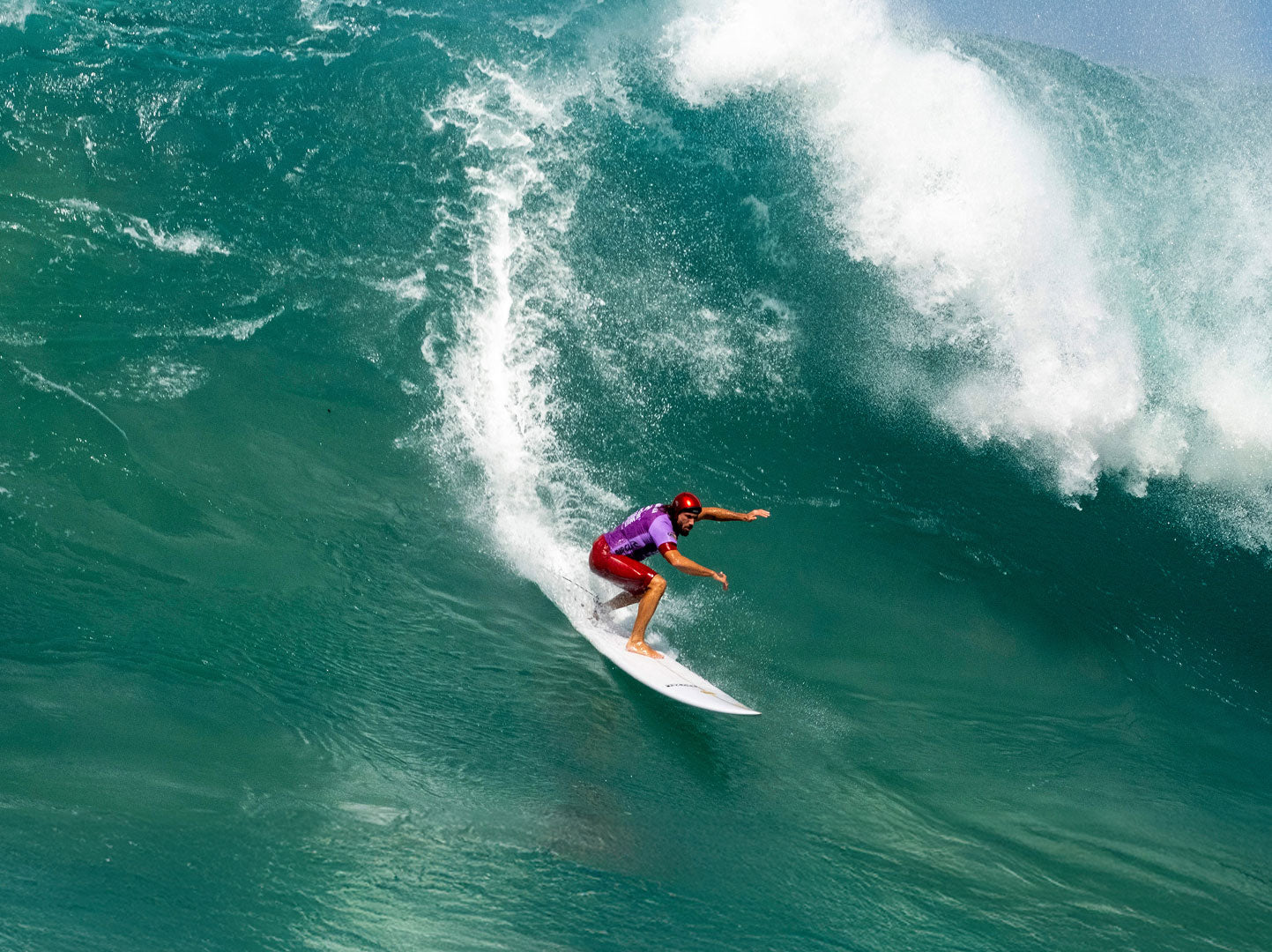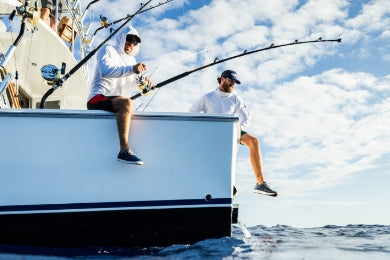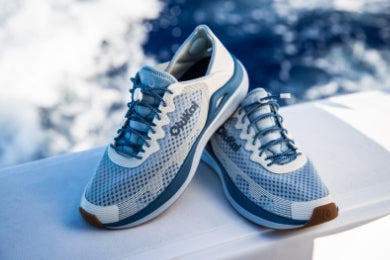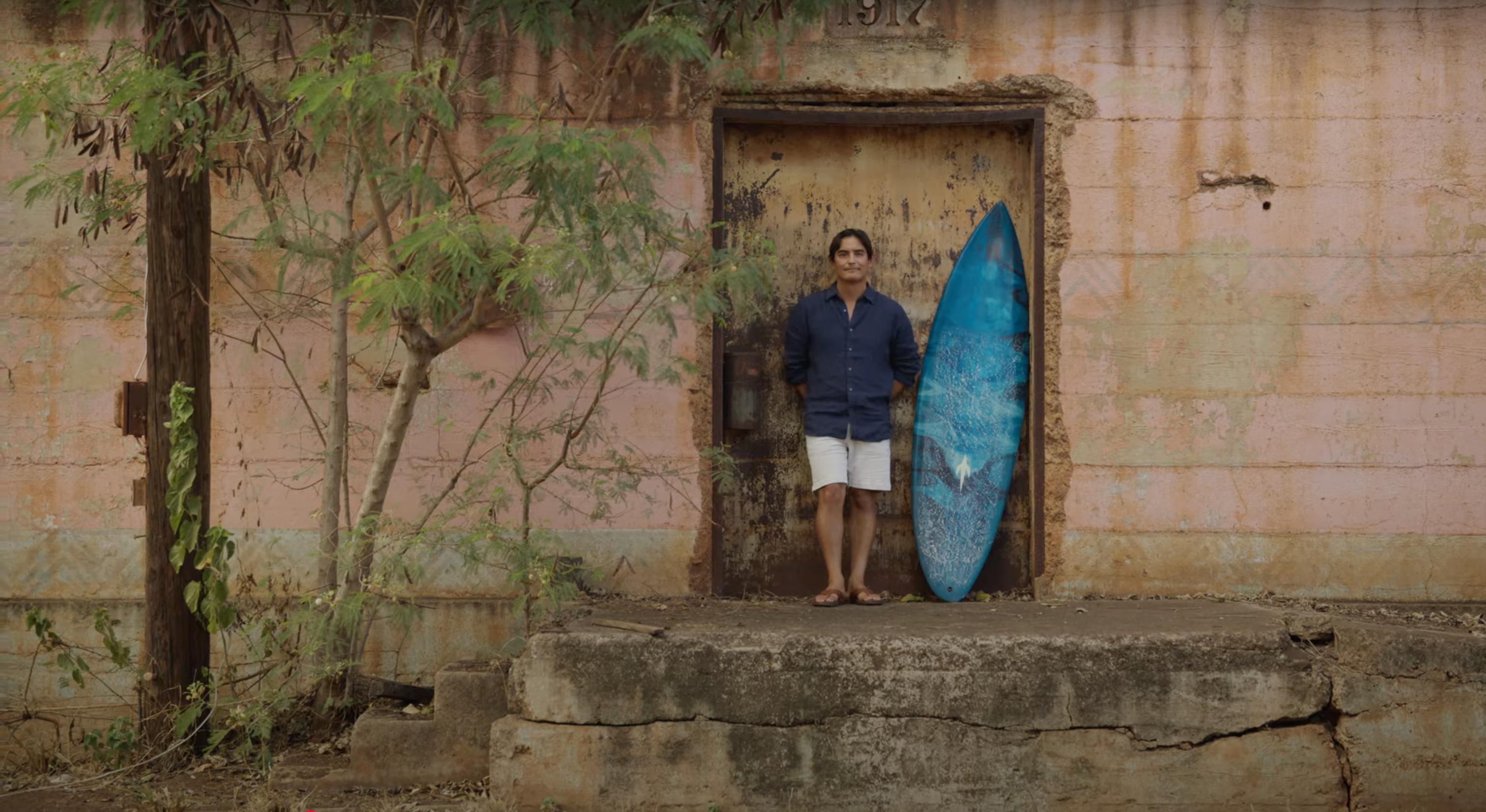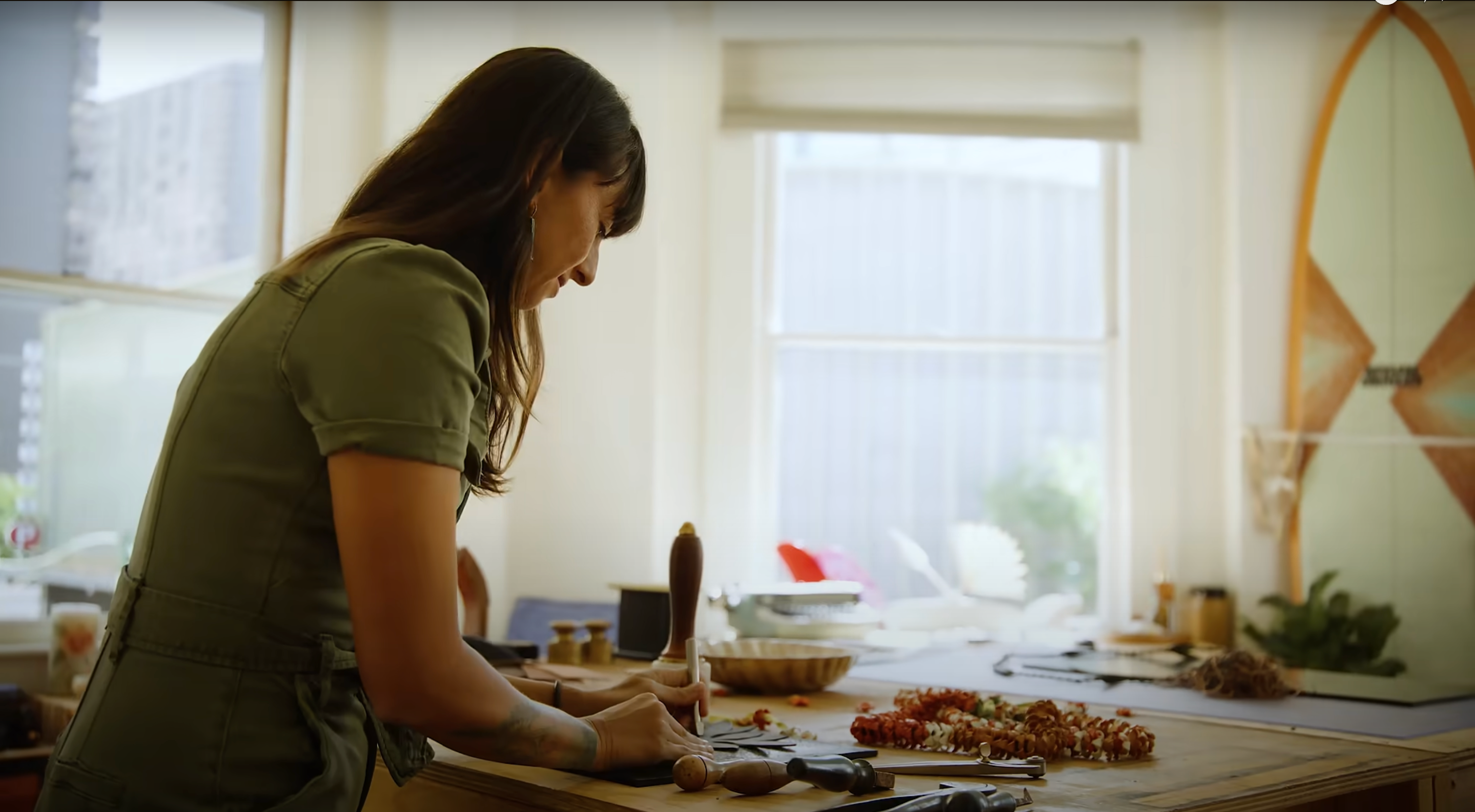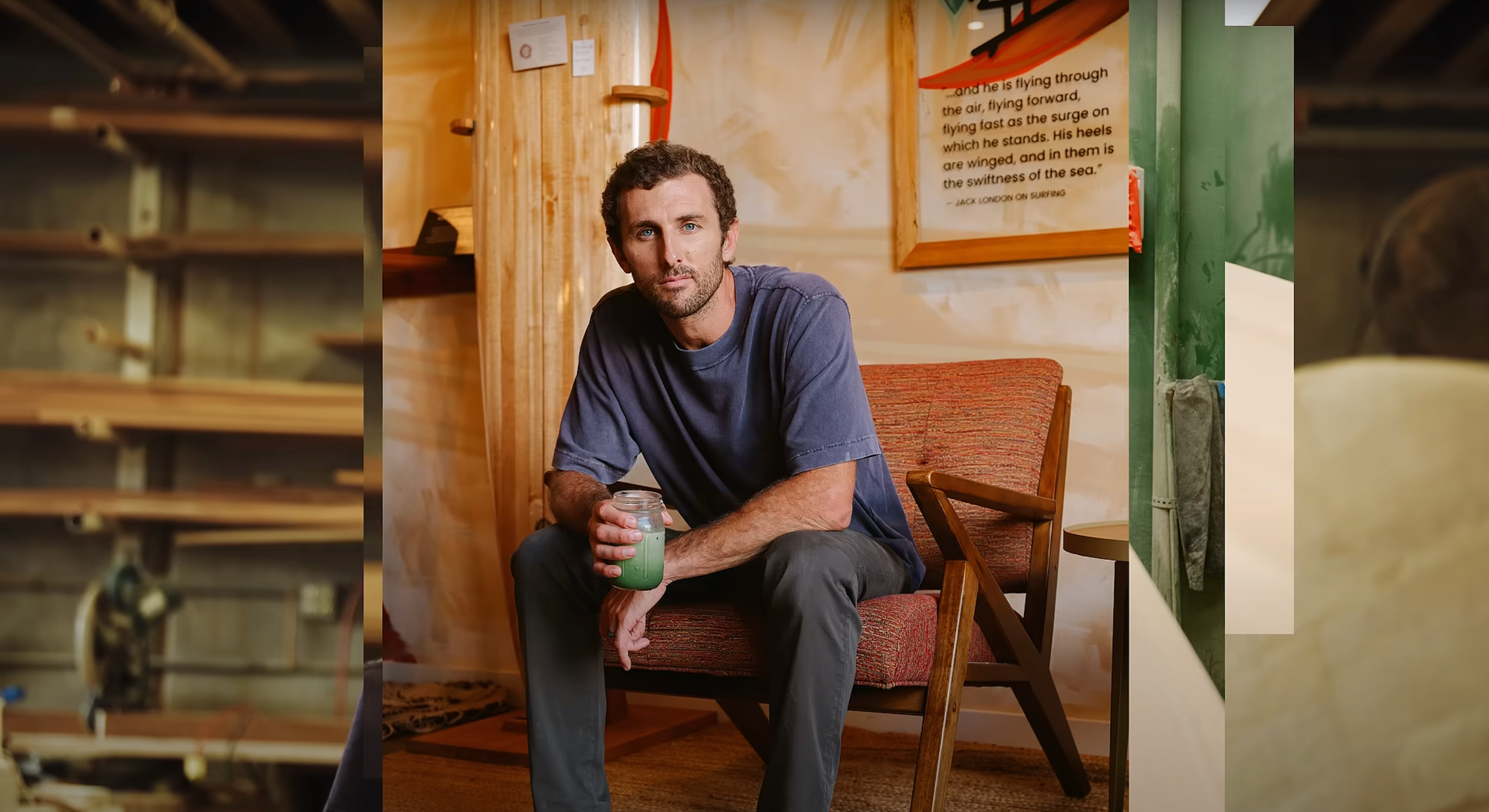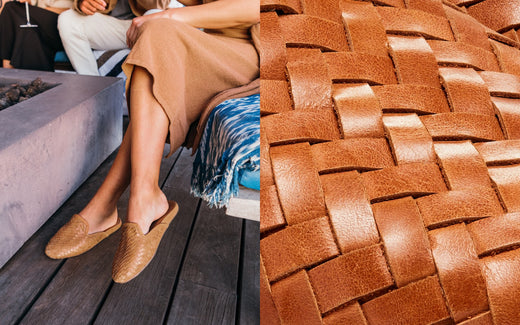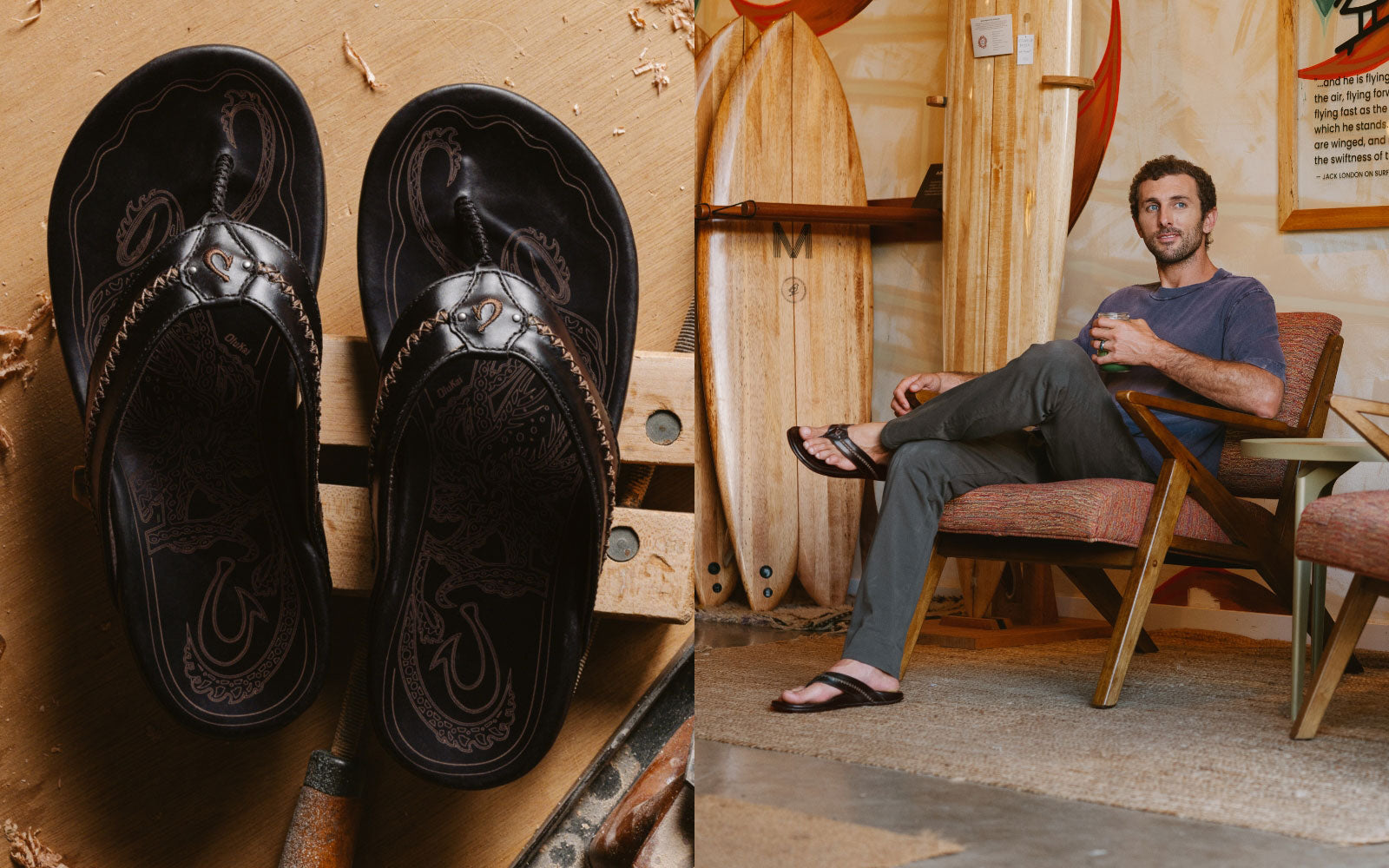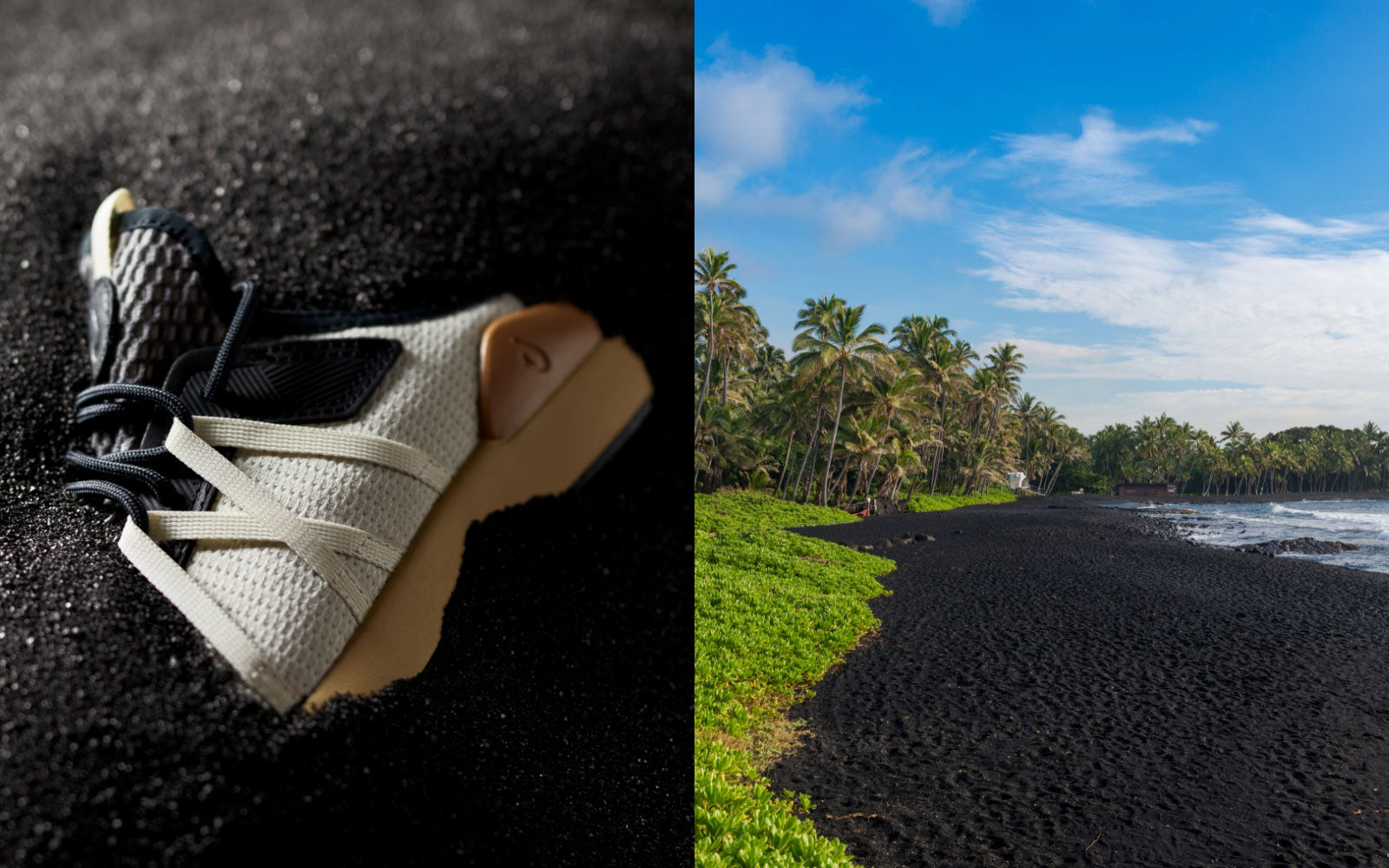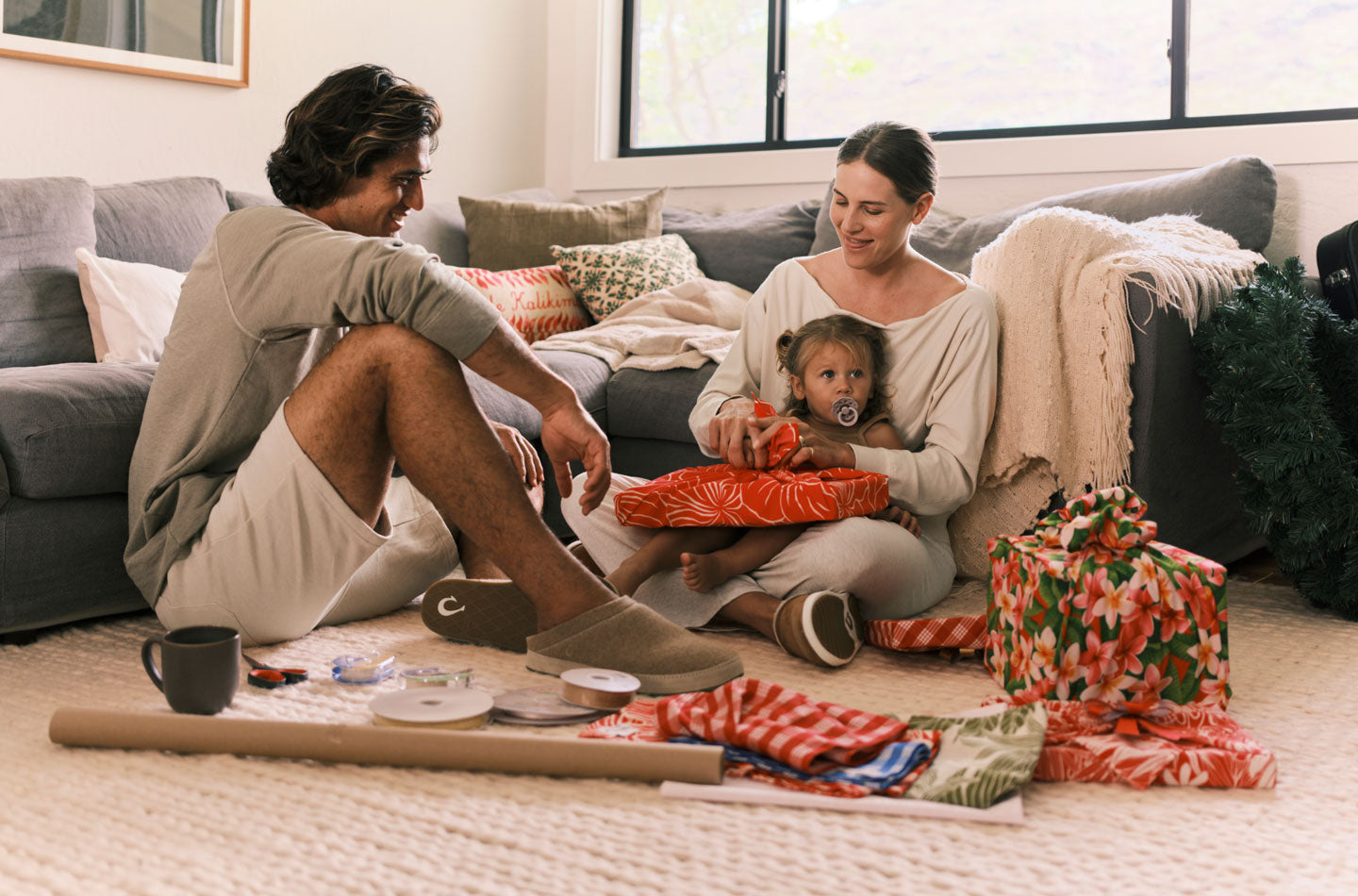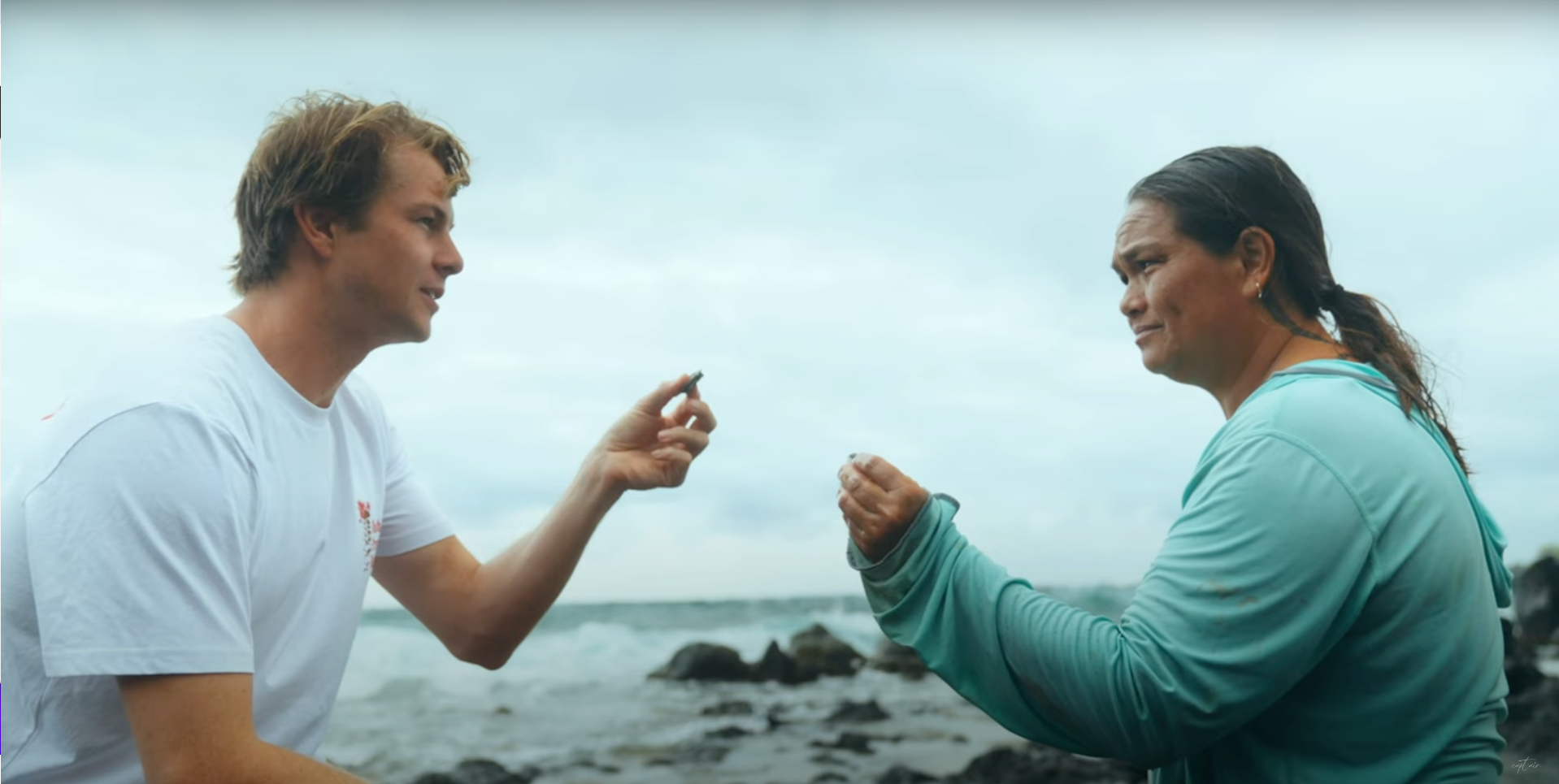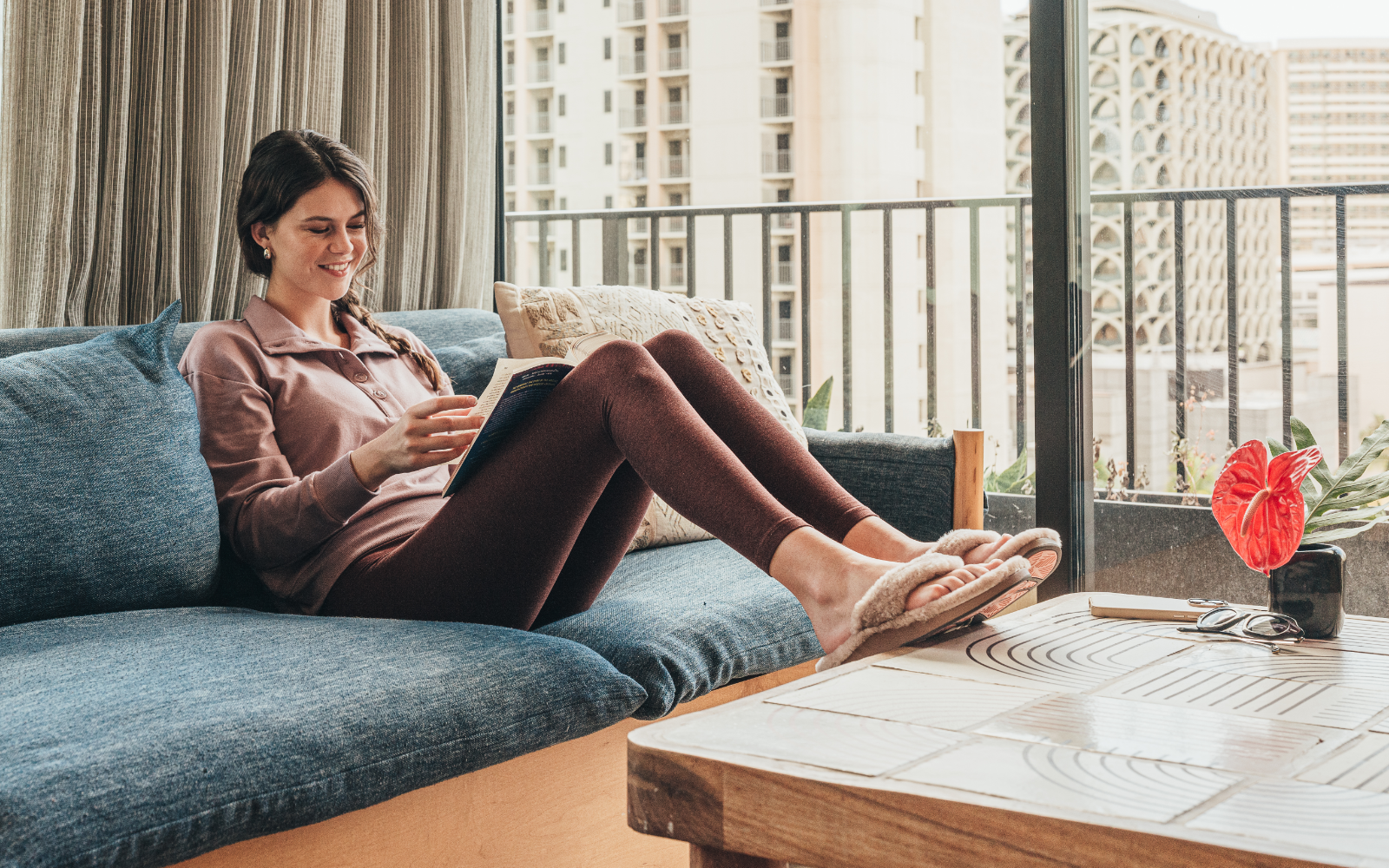Keep these tips in mind, and your new leather shoes will give you many years of service – even in a wet climate.
Protect Your Leather Shoes & Boots
Leather is a natural product from a living creature. It's designed to be durable, and to protect its contents, but as soon as leather is made into a sneaker, it looses its source of natural moisture.
Over time, this loss of moisture and lipids can cause leathers to dry out and crack. Dry leather shoes not only look bad, they're more likely to “wet out” and get your feet wet, too.
There are a number of products on the market that replace the natural oils in your leather footwear and condition them for optimal performance in wet weather. How do you find the right one?
Avoid Light Oils and Heavy Waxes
Generally speaking, products with light, synthetic oils are not good ideas for your fine OluKai leather shoes. “Mink oils” and their ilk are notorious for over-softening leathers, leading to floppy, greasy shoes.
Also avoid gloopy, waxy pastes designed for sealing snow-boots. These petroleum-heavy products stop-up the pores in your footwear, making your feet likely to sweat, and rendering your gorgeous leather shoes gummy and shiny.
Use the Right Product
OluKai uses different types of leather, from smooth, rich, full-grain leathers to softer Nubuck, and suede-style leathers. Different leathers require different leather conditioners!
For smooth leather shoes, like the Lae‘ahi Li ‘Ili Men’s Leather Sneakers or Pehuea Li ‘Ili Women’s Leather Sneakers, we recommend a quality aqueous wax product that's petroleum and flurcarbon free, like Nikwax Conditioner for Leather.
For Nubuck leather shoes like the Kalia Puki Men’s Leather Chukka Boots, products like Nikwax Nubuck & Suede Proof™ do the trick. This product has the added benefit of rending the shoe water resistant in addition to conditioning the leather.
Note: Any quality footwear treatment will darken or change the color of your shoes. So, prior to applying it, try it on an unobtrusive part of the shoe, like the back of the heel, to see how it looks. I personally like the rich, dark shine many of these product provide.
Start a Maintenance Routine
You wash your car, you wash your face, you wash your dishes. If you care about your footwear, you'll wash it too! Every so often, use a damp sponge to clean your footwear off, especially if it's been exposed to mud or road salt.
If your footwear is especially dirty, use a gentle, non-detergent soap and a soft bristle brush. Remove the insole prior to cleaning and when you're done, leave the insole out, open the shoe and leave it to dry in a warm place.
In addition to conditioning and washing your footwear, consider a spritz of an anti-fungal, deodorizing spray on the inside of your leather footwear every few weeks. These sprays (be sure to get a powder-spray) help freshen the inside of your kicks, and keep your feet healthy and fungus free too!
Keep Your Leather Shoes Dry
Though it's tempting to kick off your wet footwear in a damp pile in your closet, it's bad for your shoes. Store your leather footwear in a dry place with ample air circulation to ensure your kicks never stay wet for long.
For optimal storage conditions, try an “over the door” footwear organizer with mesh (not solid plastic) pockets for shoes. For the truly hard-core footwear fetishist, a cedar shoe tree helps keep full-grain leather footwear fresh, dry and shapely.
Don't Commit Footwear Drying Sins
For seriously wet shoes, remove the insole, stuff them with a few sheets of clean, dry paper, and place them in a warm place with ample ventilation for a day or two. The key is to permit them to dry fast enough to keep the leather from degrading, but no so quickly that the leather cracks and buckles. A day or so is a good period to aim for.
Though it may be tempting to place your footwear in front of a heater, or even in the oven, you risk damaging your leather shoes, and even softening the adhesives that bind the midsole to the outsole. Ideally, you want them few feet away from your radiator, or in a warm, sunny room.
Store Your Leather Shoes Carefully
Storing leather shoes for longer periods in wet climates can be a challenge. Even if you're not stomping though puddles daily, moisture from the ambient atmosphere can condense on your stored footwear and cause mildew.
Solve this problem by storing your shoes dry in the first place, adequately treated with a leather conditioner to enable them to resist moisture. For seriously wet climates, you may need to purchase a silica gel packet, and place it within the shoe to absorb moisture. Either way, store your shoes in an area that gets plenty of airflow, and a bit of sun.
Shop OluKai Men’s Leather Sneakers Collection
